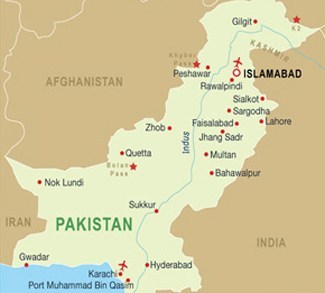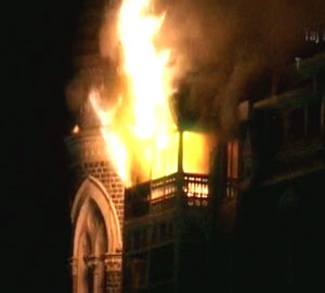Summary
Just who was behind last week’s terrorist attack in Mumbai, India? That question, confounding experts across the globe, remains the central focus of a worldwide anti-terrorist effort aimed at diffusing escalating tension between nuclear-armed rivals India and Pakistan.
Analysis
The initial claim of responsibility by the hitherto unknown Deccan Mujahedeen was universally dismissed as a subversive tactic. Instead, early reports out of India pointed the finger at the Afghan-born, Pakistani-based Lashkar-e-Taiba, a militant group primarily focused on Kashmir that has also reputedly sent trained fighters to as far afield as Bosnia, Chechnya, Iraq and Southeast Asia. Although the group was named by the lone surviving terrorist of the Mumbai attacks after intense interrogation, it has denied responsibility. Yet denial of responsibility is unknown to Lashkar-e-Taiba as it has claimed responsibility for some of the most audacious attacks against India in the past.
The covert-ops sophisication of the attacks lends further credence to the theory that only a CIA trained, ISI supported militant group could have pulled off the audacious three-day attack on India’s financial capital.
Pakistan, bowing to intense international pressure, announced on Monday the capture of the alleged mastermind of the Mumbai attacks, Zaki-ur-Rehman Lakhvi, by Pakistani Special-Ops forces, along with the arrests of 12 other militants from a Lashkar-e-Taiba training camp on the riverbank outside of Pakistani Kashmir’s main city.
But, there are other suspects.
Tracing the SIM cards in the cell-phones, Indian security forces arrested two men over the weekend, one of them being an Indian special agent deep undercover who had infiltrated Kashmiri militant groups, and exposed by his India spy handlers in order to save him from the military.
The connection of the Indian spy services to the Mumbai attacks adds yet another layer to this multi-layered conspiracy, and confirms widespread suspicion of ‘inside help’ after a slew of resignations by top Indian security personnel in response to the massive security failure that allowed the attack, amphibiously launched in Karachi, Pakistan, to have succeeded.
It should also be noted that India has now officially adopted the U.S. position reserving the right of unilateral ‘preventive’ measures against Pakistan – in other words, the Mumbai attack is seen as giving India the legitimate right to launch surgical strikes against its nuclear foe, Pakistan.
Further layers complicating the situation, and adding grist to the conspiracy fuel, is the leaked report out of the U.S. that American spies had warned India of the impending attack months prior. Why did the Indians ignore the warning? More importantly, how did the Americans discover the attack plans? And, lastly, after the nascent Pakistani civilian government demanded that Pakistan’s spy agencies, including the ISI, be brought under civilian control, why did the U.S. lobby to keep the ISI out of civilian hands and within direct control of the Pakistani military, with whom it maintains a half-century of close ties? It also remains to be seen just how much contact the CIA retains with its former creation, the militant group Lashkar-e-Taiba.
Of all the players involved, everyone seems to have been advantaged by the carnage:
India now retains a relatively ‘free-hand’ to respond with surgical strikes against Pakistan, particularly against Kashmiri militant groups.
Pakistan has an excuse to vacate the NWFP and FATA in order to strengthen its border with India should the latter mobilize troops along the front, returning the region to the semi-autonomous status quo it enjoyed before the U.S. war on Afghanistan spilled across the border.
The United States can now step up its cross-border military response against Pakistani targets, and will doubtless support yet another military coup in Pakistan in order to rule the latter through a proxy dictatorship.
The anti-American mujahedeen fighting the Pakistani security forces along the AfPak region border will no doubt find their positions relieved, as Pakistan is forced to focus on its eastern flank, thereby allowing the militant groups a freer hand in attacking NATO convoys supplying troops in Afghanistan through the dangerous passes of the Hindu Kush mountainous range.
It may be too early to determine just who was behind the Mumbai terrorist strike, but a careful analysis of quickly unfolding events ought to reveal just who had the most to gain – and, in geopolitics, the player with the most to gain is usually the culprit.
History of Lashkar-e-Taiba
Lashkar-e-Taiba is a creation of the CIA and its Pakistani counterpart, the ISI. As part of the insurgency strategy developed by the CIA to counter the Soviet invasion of Afghanistan, the CIA and ISI created, funded, trained and supported the anti-Soviet mujahedeen – of which the Lashkar-e-Taiba was one such group. After the Soviets retreated from Afghanistan by the end of the 1980s, Pakistan’s ISI directed the Lashkar-e-Taiba towards its arch-nemesis India, where the group continues to partake in the decades-long insurgency for Kashmiri independence. Today, the group is based in Pakistani Kashmir, and trained and patronized by Black-Ops elements within Pakistan’s ISI focused primarily on destabilizing India.
Although the group was ‘officially’ banned in 2002 under intense pressure from the U.S., it continues to operate within Pakistan without much hindrance.
Manjit Singh is a contributor to Geopoliticalmonitor.com



